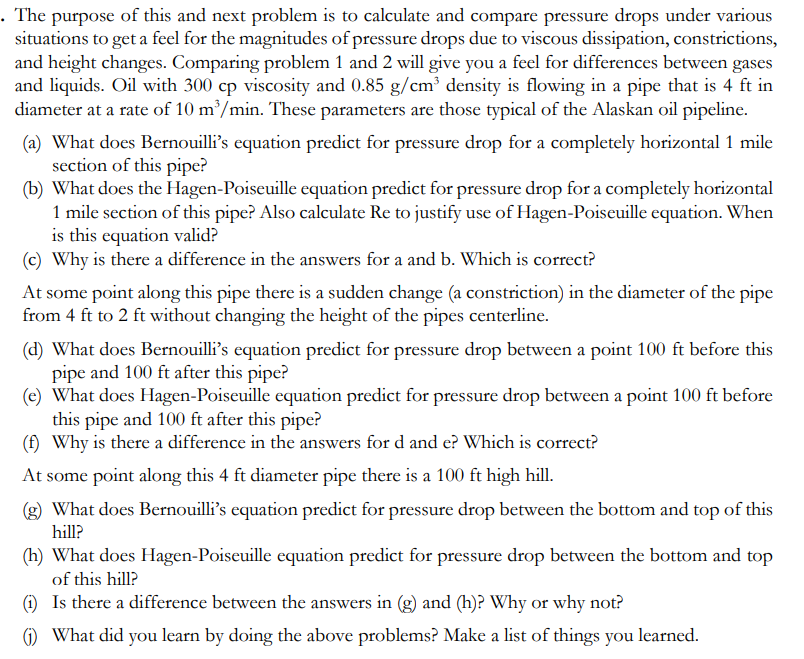Answered step by step
Verified Expert Solution
Question
1 Approved Answer
The purpose of this and next problem is to calculate and compare pressure drops under various situations to get a feel for the magnitudes of
The purpose of this and next problem is to calculate and compare pressure drops under various
situations to get a feel for the magnitudes of pressure drops due to viscous dissipation, constrictions,
and height changes. Comparing problem and will give you a feel for differences between gases
and liquids. Oil with viscosity and density is flowing in a pipe that is in
diameter at a rate of These parameters are those typical of the Alaskan oil pipeline.
a What does Bernouilli's equation predict for pressure drop for a completely horizontal mile
section of this pipe?
b What does the HagenPoiseuille equation predict for pressure drop for a completely horizontal
mile section of this pipe? Also calculate Re to justify use of HagenPoiseuille equation. When
is this equation valid?
c Why is there a difference in the answers for a and b Which is correct?
At some point along this pipe there is a sudden change a constriction in the diameter of the pipe
from to without changing the height of the pipes centerline.
d What does Bernouilli's equation predict for pressure drop between a point before this
pipe and after this pipe?
e What does HagenPoiseuille equation predict for pressure drop between a point before
this pipe and after this pipe?
f Why is there a difference in the answers for and e Which is correct?
At some point along this diameter pipe there is a high hill.
g What does Bernouilli's equation predict for pressure drop between the bottom and top of this
hill?
h What does HagenPoiseuille equation predict for pressure drop between the bottom and top
of this hill?
i Is there a difference between the answers in g and h Why or why not?
j What did you learn by doing the above problems? Make a list of things you learned.

Step by Step Solution
There are 3 Steps involved in it
Step: 1

Get Instant Access to Expert-Tailored Solutions
See step-by-step solutions with expert insights and AI powered tools for academic success
Step: 2

Step: 3

Ace Your Homework with AI
Get the answers you need in no time with our AI-driven, step-by-step assistance
Get Started


